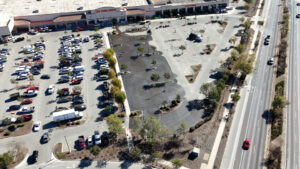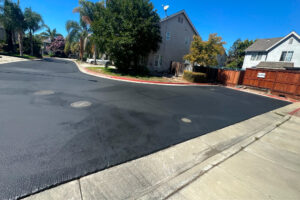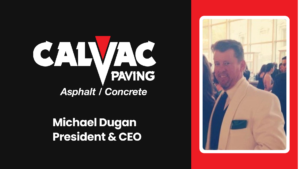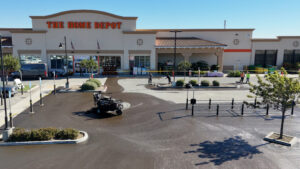See our work on social media:
Maintenance Monday:
10 Ways to Prepare Your Asphalt for Summer
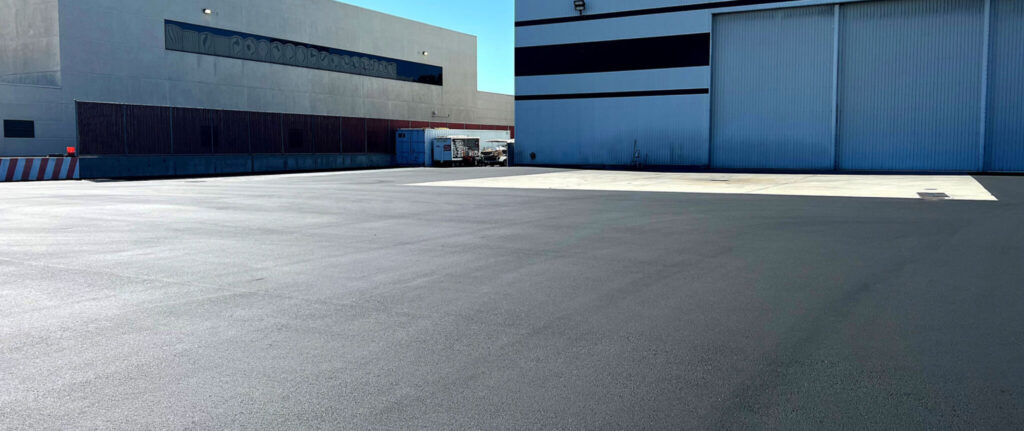
Whether it’s a roadway, a driveway or a parking lot, asphalt takes a pounding over the fall and winter months. The cooler temperatures and more frequent rains can take a toll on even the most robust and well-constructed asphalt pavements. To ensure maximum safety and durability for your asphalt and the people who travel and park on it, Calvac Paving presents ten ways to prepare your asphalt for summer!
1. Take A Closer Look.
Asphalt is very durable and resilient, but there are a number of ways it can fail, so it’s a good idea to have a thorough walkthrough at least quarterly. You should check the condition of your asphalt more frequently in cases of unusually heavy or inclement weather, or if you notice indications of a problem like water flowing down the middle of your lot or roadway.
2. Cracked-Up Asphalt Isn’t Funny.
Surface cracking often indicates that the subgrade beneath the asphalt is failing, this will also allow water penetration into the subgrade. In these cases, depending upon the severity, the affected problems such as potholes, alligatoring, or area(s) need to be removed and replaced.
3. Paint It Black.
If your asphalt looks gray rather than black, has a pitted look or you notice deep cracks which may allow water to infiltrate to the subbase, it’s time to engage in crack filling and sealcoating, to help preserve and protect the asphalt and retard further damage. Note: Most unsealed asphalt has a rough and somewhat textured surface, because of the placement methodologies and the type of hot mix used. The larger the aggregate in the mix the stronger the pavement, but you give up the smooth appearance The solution to this rough surface is twofold. First, an admixture of 2% latex per gallon of raw seal coat is added to both coats of material. secondly, adding one to four pounds of sand to the seal coat on the first coat will add necessary fine aggregate to fill the voids in the asphalt pavement. No sand is added to the second coat. This works to ensure a better looking, longer-wearing surface.
4. Don’t Stand For It!
Standing water can be a symptom of subsurface issues with a section of your asphalt, usually caused by compaction failure in the subbase. Not only can standing water erode the surface as we’ve already discussed, but it can also undermine the integrity of other sections as the water is forced out of the depression and follows the drainage profile of the area in question.
5. Rainbows Belong In The Sky, Not On Your Asphalt!
If you notice iridescent or rainbow-colored patches, these should be cleaned off as soon as possible. Oil and fuel spills can degrade the asphalt’s surface quickly, creating imperfections which over time can become full-fledged failures, reducing your asphalt’s performance and lifespan.
6. Clean It Up.
In addition to the fuel and oil spills mentioned above, it’s always a good idea to keep your asphalt clean and clear of debris such as garbage. Food products, in particular, should be cleaned up quickly, because these tend to have a relatively high acid content, e.g., ketchup, hot sauce, salad dressing, which then lingers on the surface, promoting deterioration of the asphalt. Besides, it just looks nicer!
7. Root It Out.
If you have trip hazards such as uneven areas or raised roots, now is an excellent time to get them corrected. Trip hazards can be an expensive liability and can presage surface failure later depending upon the nature, type, and expression of the hazard. If possible, identifying and removing these hazards early can extend the life of your asphalt and help keep your insurance premiums down as well.
8. Traffic Control Is Important.
Older and graying pavements make it significantly more difficult to see the traffic markings. This can lead to potentially hazardous situations. Often the markings, arrows, crosswalks, stops and bars can become unrecognizable because of “ghosting”. This is the prior striping bleeding into view and confusing the drivers and pedestrians and leading to potential accidents. This condition is usually timely with the need to seal coat the pavement. Seal coat and restripe will solve this for years to come. This will also allow the property to be brought up to the current Building Code.
9. Time Is Not On Your Side.
By the time most people notice a problem with their paving, the damage could be far more extensive than even a detailed site walk can really pinpoint. Frequent examination and correcting areas which show indications of failure as soon as possible after they’re noted can help prevent costly, time-consuming, and unnecessary repairs.
10. Call In The Professionals.
A paving job done poorly can often be worse than no repair at all. That’s why it’s worth your while to bring in pavement professionals with a solid track record of proven results. Calvac Paving has been serving the Bay Area since 1974, and we have the experience, resources, and personnel to do the job right the first time, every time. Put our experience and cutting-edge construction technology and methods to work for your project by calling any of our Bay Area locations or clicking here to contact us!
Company
Services
Contact us
© 2025 All Rights Reserved.


